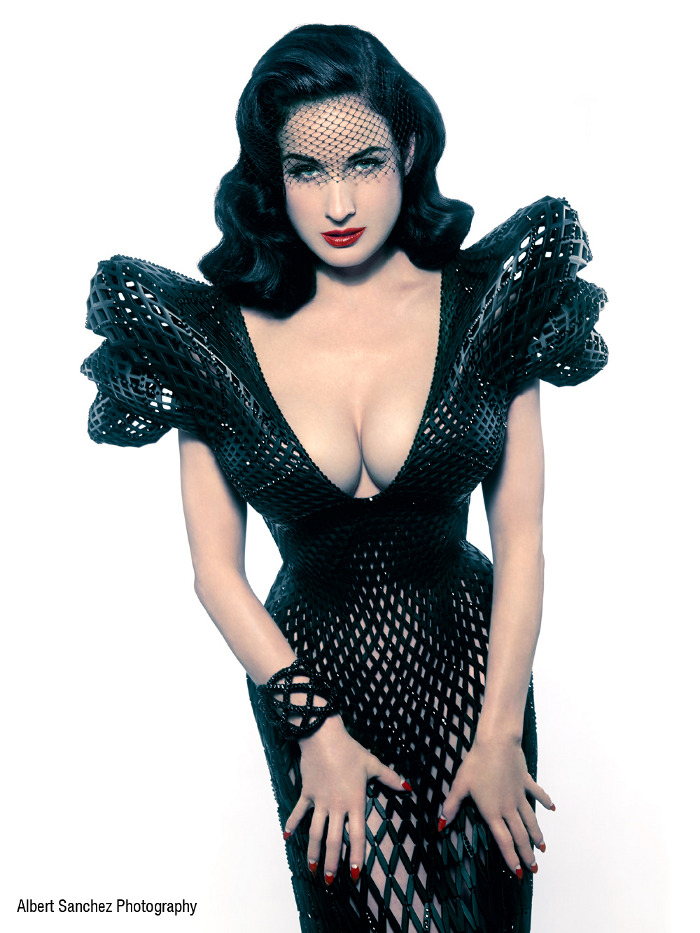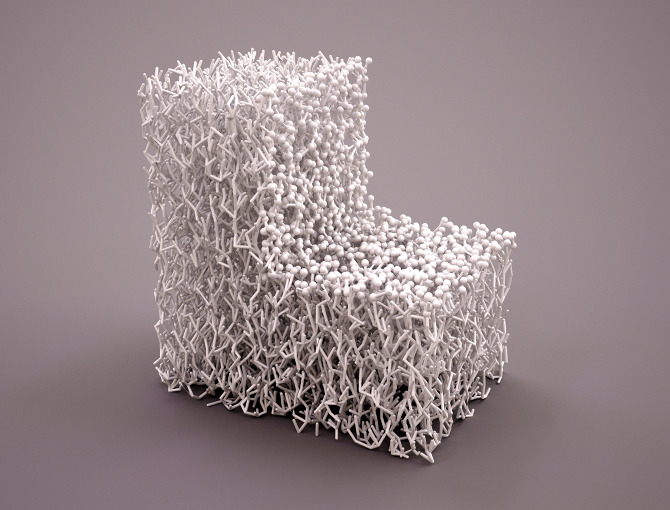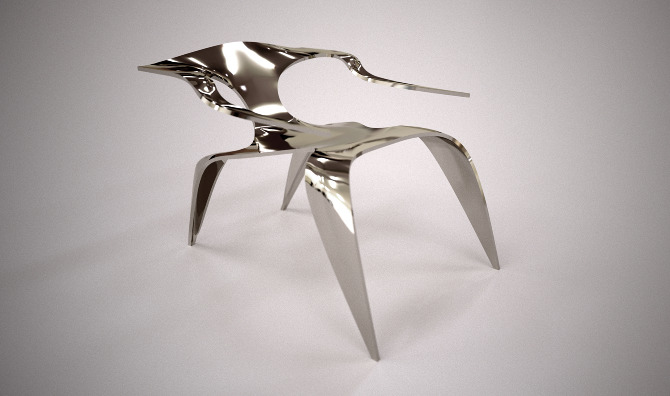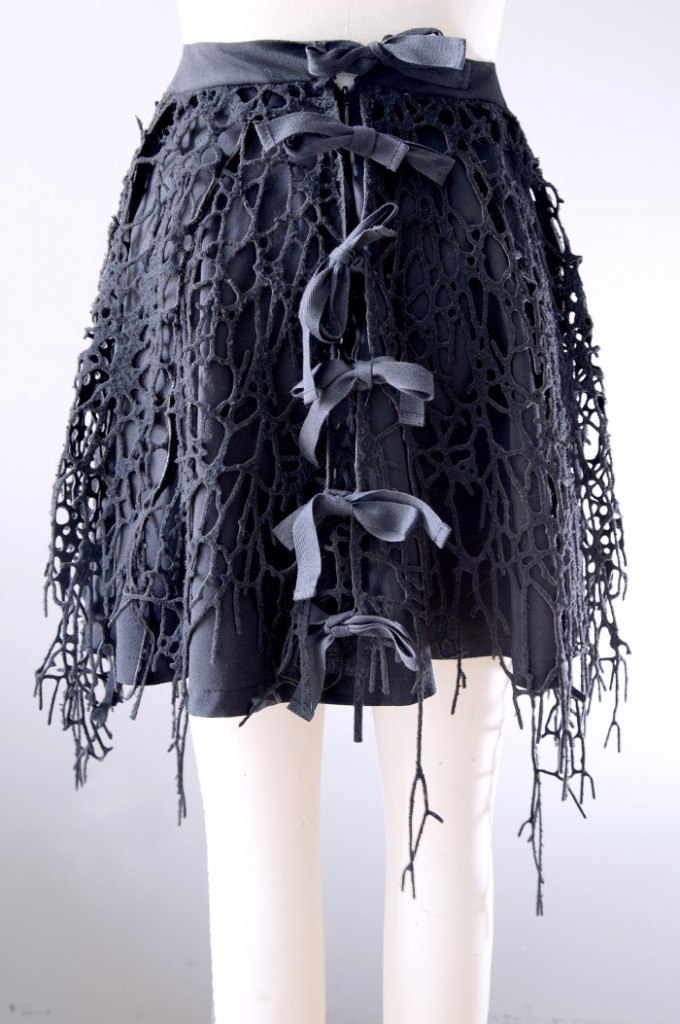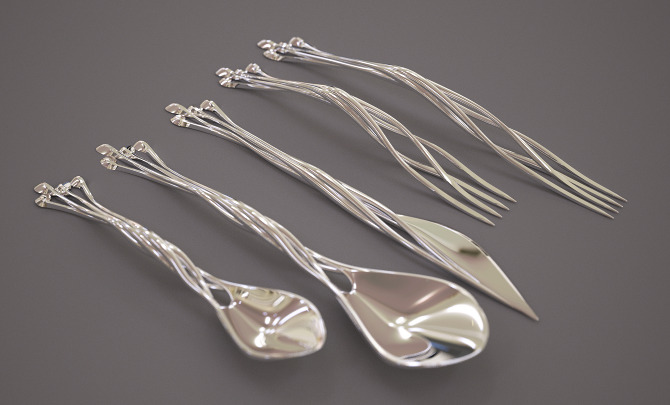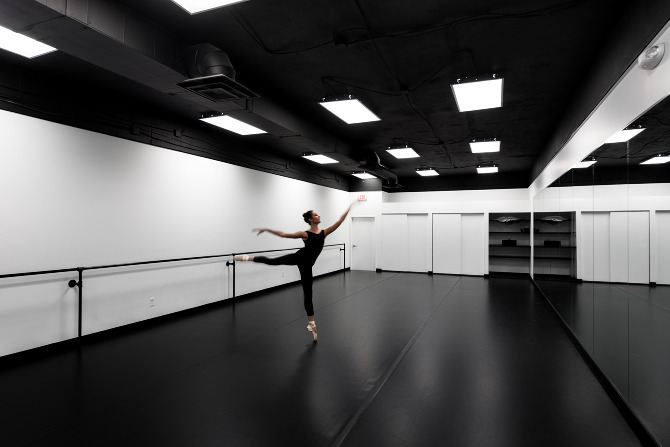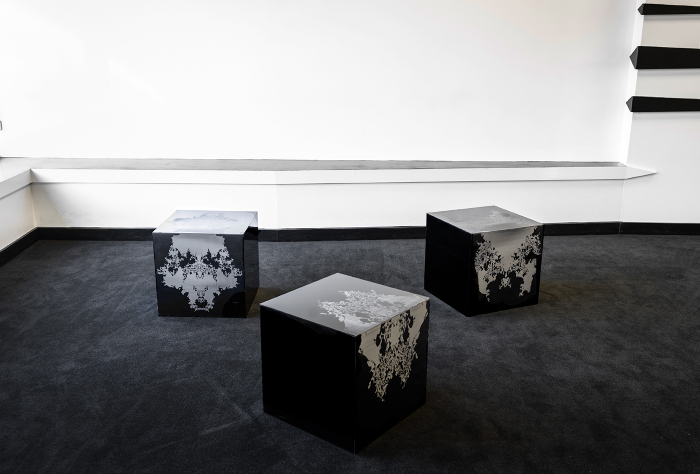INHALE is a cultural platform where artists are presented, where great projects are given credit and readers find inspiration. Think about Inhale as if it were a map: we can help you discover which are the must-see events all over the world, what is happening now in the artistic and cultural world as well as guide you through the latest designers’ products. Inhale interconnects domains that you are interested in, so that you will know all the events, places, galleries, studios that are a must-see. We have a 360 degree overview on art and culture and a passion to share.

Dita von Teese + a black 3D printed gown = huge spotlight (not only on the wearer, though it’s quite the view) and a promising future in design. At least this is what Francis Bitonti should expect ever since the unveiling of the first gown ever to be created entirely on a 3D printer – a machine that can sculpt plastic, metal and ceramic (until now) from designs produced on the computer. The 3,000 plastic joints that resemble a natural fabric don’t necessarily make the innovative dress too confortable, as Dita von Teese stated: “I’m no expert in comfortable clothing. In fact, I’m most comfortable in uncomfortable clothing. The corseted shape of this dress was actually comfortable to me”. I’m no expert either, Miss Teese, but I dare step out of my comfort zone and say this might be the best marketing I’ve yet to see for 3D printing in fashion and for the one who brought the gown into being, Francis Bitonti.
The designer’s first project emerged in 2007 for the New York City Department of Transportation when he created Squiggle Rack, a playful alternative to the ever-so-boring bicycle racks found on sidewalks. After that, Bitonti worked up his name through projects that generate more than a few “a-ha moments”, including the appearance of Dita von Tesse as a Sci-Fi evil character with a hidden agenda and a very revealing look.
Ever since Bitonti started to experiment with the broadening technique of 3D printing, his work has been tinted with a fresh, organic approach that is visible in everything he creates, whether it is a chair, a mirror or a garment. For instance, the Bristle Stool and Bristle Chair consist of multiple thin and inflexible stems developed through specific algorithms and designed using one single ABS plastic part. Hempitera is another cutting-edge piece of furniture which resembles a mirror moulded in a chair-like form. It is actually made of polished aluminium, but it looks very deceiving as it reflects the surrounding environment.
Being a designer who makes a statement not only through his work but also in the way he presents himself to the public, Bitonti brought 3D printing into the fashion world. The collaboration with Katie Gallager for her Autumn/Winter 2013 collection translates into laser wool textiles that make the body melt into the clothes. Each netting corresponded to a specific piece of clothing and was digitised in computer algorithms that generated the pattern for laser cutting. The collection also included belts created by Francis Bitonti’s Studio that keep to the all-black look and twiggy motif.
Since I adverted to inventive elements, I must refer to the impressive Setae Flatware, the kind of cutlery that the graceful elves from Lord of the Rings might use during a lavish dinner. The intertwining of four individual strands made of silver plated 3D printed stainless steel provide an elegant functionality.
From the dinner service worthy of fairest Lothlórien to the black and white design of Peconic Ballet Theatre in Riverheard, New York, Bitonti never ceases to baffle. This 2,000sqft facility is reminiscent of the ballet company featured in Aronofsky’s Black Swan (2010). White walls balance against black floors, black ceilings and black leotards, making the performances stand out and highlighting the dancers. In the waiting room a couple of laser imprinted acrylic Rorschach Tables that double as chairs are randomly displayed. The lighting helps to create a diffuse yet simple and elegant space where the art of ballet is the main ruler.
Francis Bitonti’s work is straightforward and technological, yet it doesn’t upset the eyes with an overspill of details. He turns computer techniques into wearable garments and transforms spaces and objects into human-friendly products. Ironically, this comes from a designer who looks like a walking-cliché with his punk hairdo and all-black clothing.
by Cristiana Șerbănescu
Cristiana Șerbănescu is allergic to describing herself to the public. The one thing she is sure of is that she wants to come to terms with her own artistic differences. She is now attempting to INHALE.



